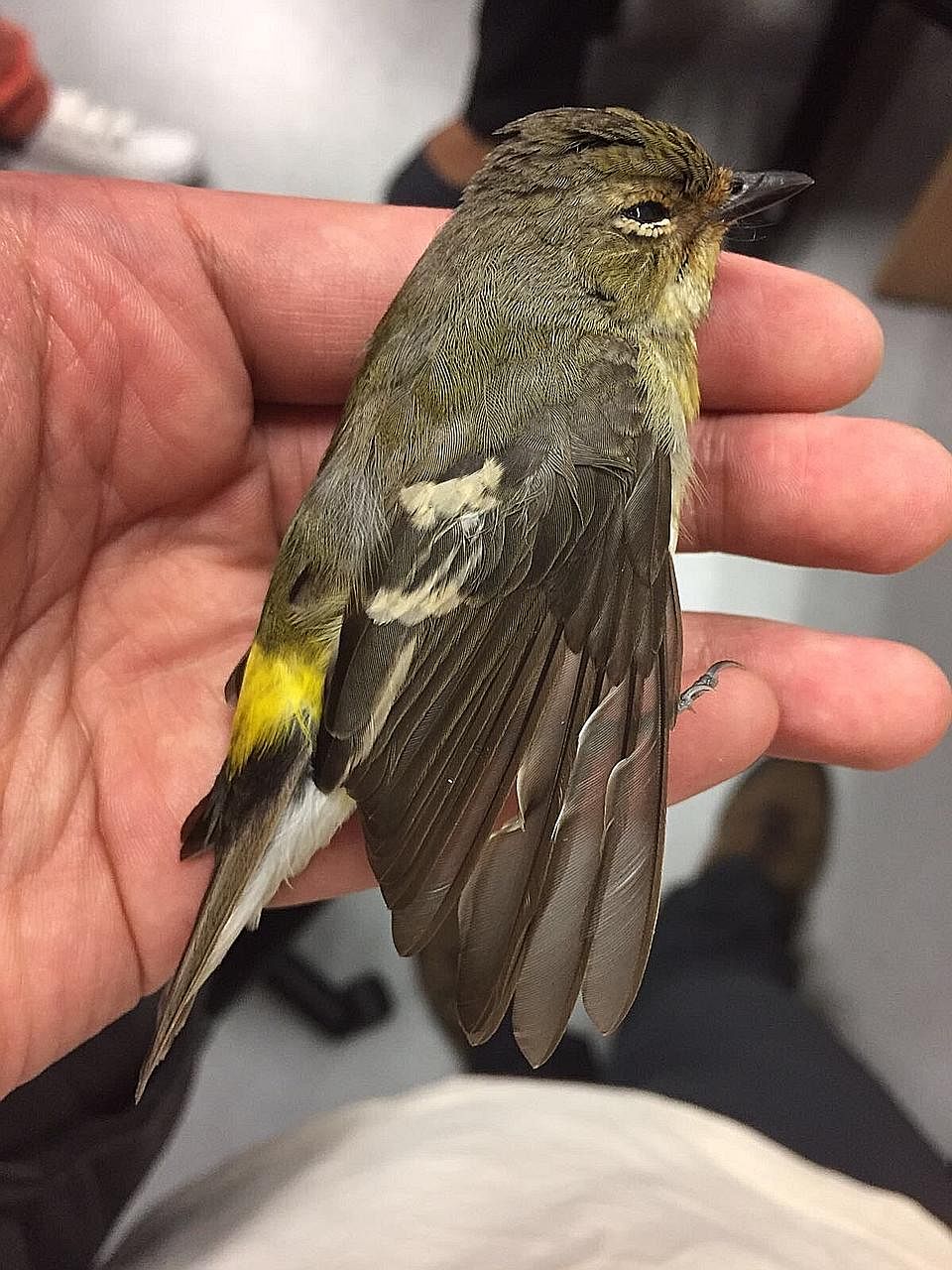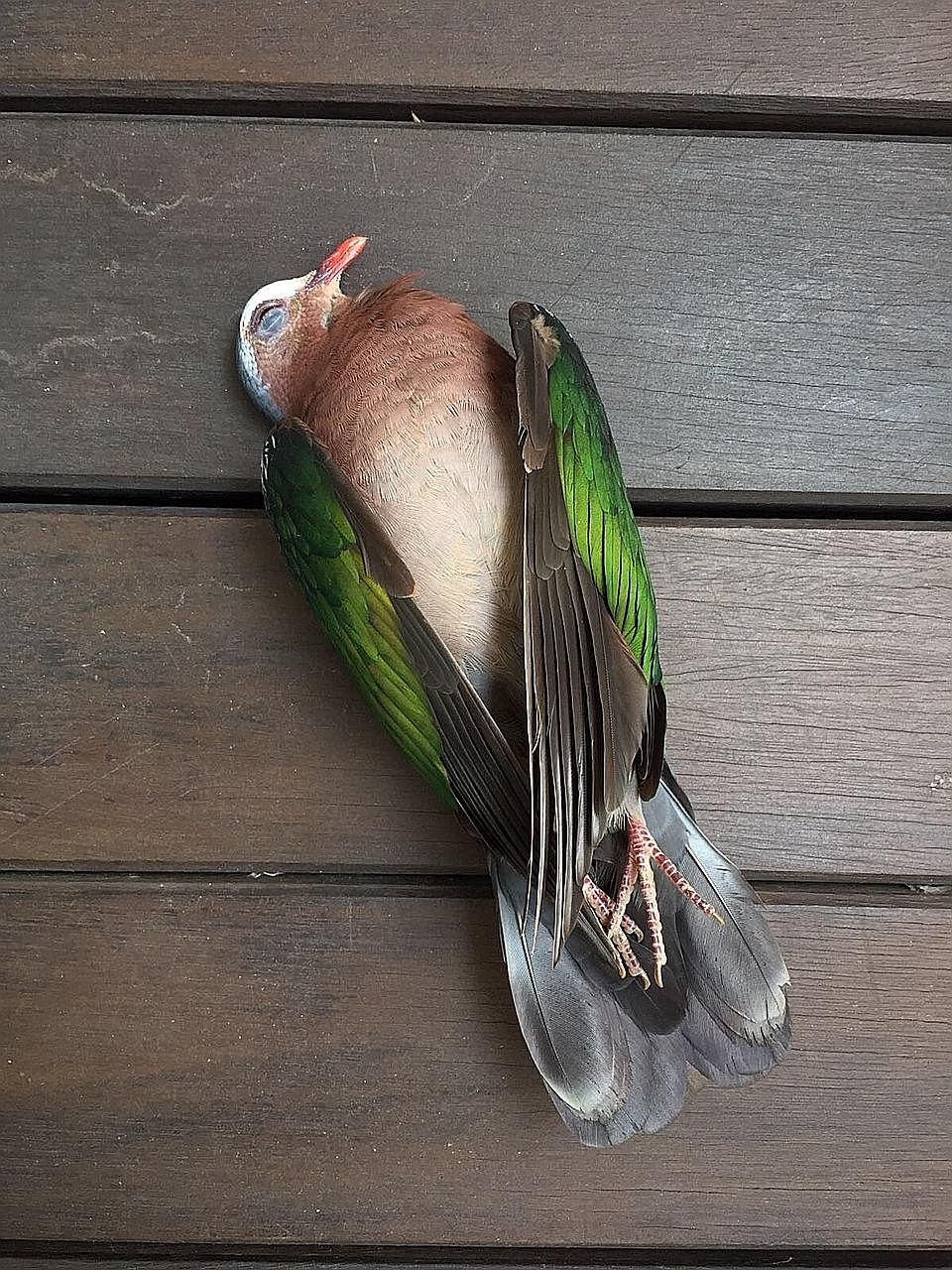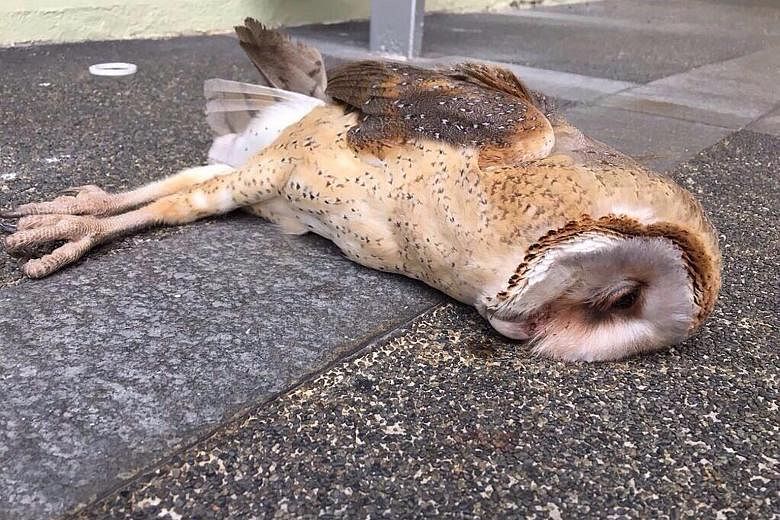Skyscrapers have become part of the skyline in land-scarce Singapore, but they are posing a problem for migratory birds. And buildings in the central and western parts of the island are the ones birds are most likely to crash into, a new study has found.
Put together by bird scientists and researchers from institutions such as Nature Society (Singapore) and the National University of Singapore, the study found that, between 1998 and last year, 237 migratory birds collided with buildings, and 157 of them died.
Of the 237 collisions, 115 took place in the Central Business District and a few residential areas on the fringes of the Central Catchment Nature Reserve.
In the west of the island, there were 57 collisions, largely in areas with heavy industrial land use on the edge of the Western Catchment area. The two areas accounted for 73 per cent of all reported collisions in Singapore.
This could be because the western and southern ends of Singapore are geographically closest to Sumatra, Indonesia, where many migratory birds spend the winter, said Mr Yong Ding Li, one of the authors of the paper.
Mr Yong, a member of Nature Society (Singapore) and a PhD candidate studying birds at the Australian National University, added: "Many migratory birds make use of the narrowest sea crossings where possible - because of the hazards of sea crossings. Birds that lose flight altitude and end up in the sea will almost certainly not make it."
The study, the first to document bird and building collisions in South-east Asia, also found that certain species of birds are more likely to collide into buildings than others.

In Singapore, four species - the blue-winged pitta, yellow-rumped flycatcher, western hooded pitta and oriental dwarf kingfisher - accounted for 53 per cent of all collisions. Mr Yong said birds such as pittas may fly at an altitude that renders them more vulnerable to building collisions.
"It may be that pittas, being mostly ground-dwelling birds in tropical forests, may not fly as high as other migrants... thus becoming more vulnerable to collisions with man-made structures," he added.
The hazard of bird-building collisions is not unique to Singapore.
It has been documented in other places, such as Hongdo Island in South Korea. Between October 2004 and November 2007, 89 birds were found dead after colliding with windows and other man-made structures. And in North America, estimates of bird deaths from collisions range from 100 million to one billion a year.
The study said: "The birds most vulnerable to collisions with man-made structures are migratory species whose routes pass through major urban centres.
"The problem is exacerbated by light pollution from urban buildings at night, which attracts and disorientates night-flying birds, leading to increased collision rates in urban areas."

The study was done by Mr Low Bing Wen, Mr Yong, Mr David Tan, Mr Alan Owyong and Mr Alfred Chia. It was published in the June issue of Birding Asia, the bulletin of the Oriental Bird Club - a Britain-based society for ornithologists studying Asian birds.
Mr Chia, who is from the Nature Society (Singapore) Bird Group, said all it takes is for people to switch off the lights in high-rise buildings, instead of leaving them on throughout the night.
He said: "It may not be practical or feasible for the building authorities to make it mandatory for building owners and developers to install bird-friendly glass in building facades."
Bird-friendly glass, which is a special kind of glass that has UV-reflective patches to make the glass more visible to passing birds, is not used in Singapore.
But Mr Chia said: "There is one thing that can be immediately done and at no cost - switching off lights in high office buildings in the city in the night. It will contribute positively to minimising the incidents of birds crashing into buildings."
In New York City, for example, some building owners have, since 2005, been switching off non-essential lights after learning of the fatal attraction of birds to lights. Over 90 buildings, including the Rockefeller Centre, Chrysler Building and Time Warner Centre, have joined the Lights Out programme, encouraging buildings to keep birds safe.


